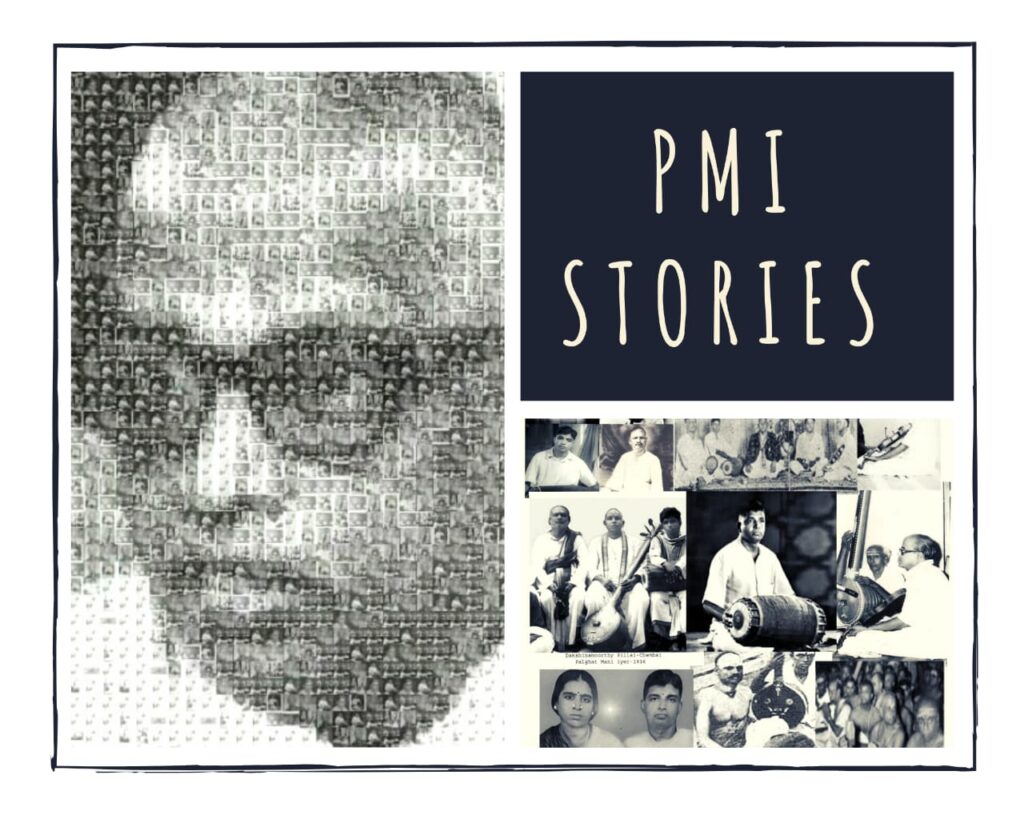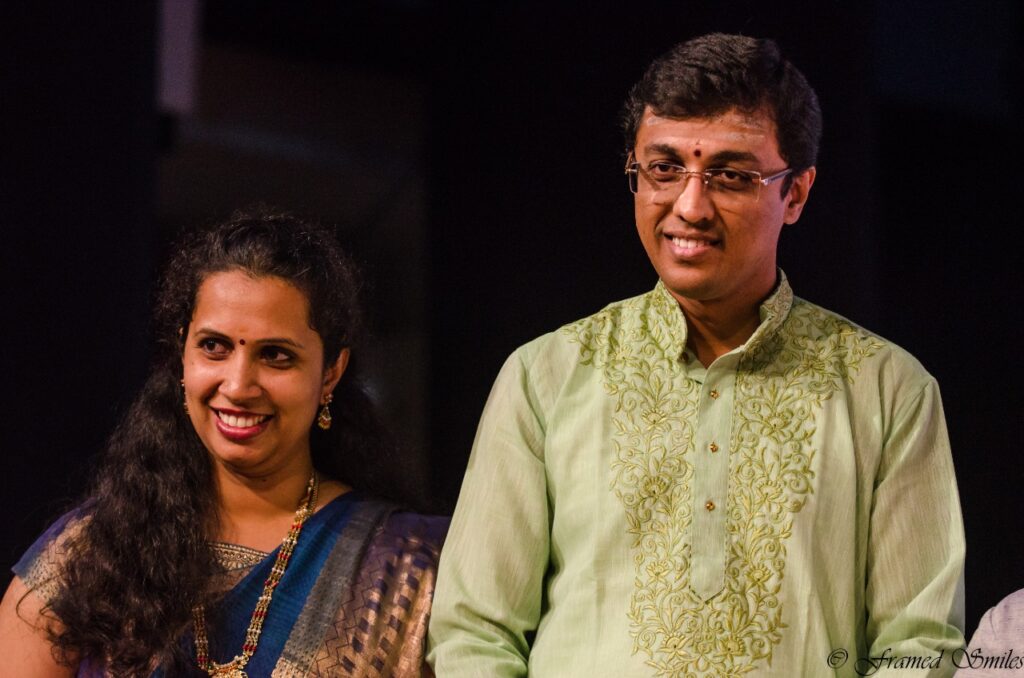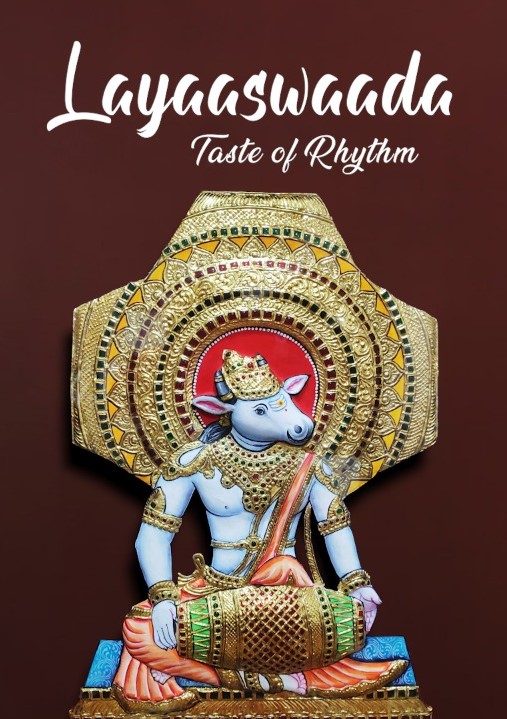Musicians engage listeners in novel ways
With time on their hands and normalcy nowhere in sight, Carnatic musicians are resorting to thought provoking, interesting and carefully curated video series’ to engage with others. This reflects a change from the first lockdown fourteen months ago which resulted in a surfeit of ad-hoc, generally poor-quality programming, in what seemed a frenetic need to stay visible.
A version of this article appeared in The Hindu newspaper.

Senior vocalist Geetha Raja is one of the few to have included students in her videos. She presents some less-heard kriti-s in chorus with her pupils. “I wanted to document these in the authentic Dhanammal bani taught to me by my Guru, Smt. T. Brinda. So consistent was her teaching that if a few of us got together now, we could render a kriti in unison without any rehearsal,” she says. Geetha taught these rarer pieces, including padam-s and javali-s, over several weeks to her students, during her regular classes, and then did some group dry runs too. She notated the pieces she taught and provided her students with these as a ready-reckoner for practice. “Padam-s, in particular, require maturity and repeated singing to convey bhavam. The impending video motivated the students to not only perfect the songs but to also discipline themselves to, for example, consistently singing each sangati twice.” She hopes the series will serve as a permanent record of the hallowed patantaram. These videos can be accessed at https://youtube.com/playlist?list=PLDT1TkriIq-ndI7_MlB9dpvDBgATtHRWT
Little Heroes is an animated series envisioned by violinist Rajeev Mukundan and his wife, vocalist Krithika Natarajan (https://www.youtube.com/playlist?list=PLPxXqbk3TSu3iOhluvp_QzCK6TNlyyw_L). Rajeev, a Gaming engineer from Carnegie Mellon University, and a talented digital cartoonist and caricaturist, explains. “I had been toying with the idea of animated musicals featuring Carnatic Music. When Krithika saw Baby Yoda in the Disney show The Mandalorian, she wondered what the Trinity might look like, recreated as children. I got to work immediately.” Rajeev drew each character adorably, then added in an idyllic, imagined scene with simple animation. If one looks at the average viewership time on YouTube, it is just about 3 minutes – the short and sweet episodes of about 1.5 minutes practically guarantee their being watched from beginning to end. The animation is accompanied by a little description to give some context to the whole piece. To depict the characters in an instantly recognisable manner was a challenge – which is why, for example, young Shyama Shastri is still shown with his characteristic beard. Rajeev uses ProCreate to draw the characters and Adobe After Effects for the animations.
Rajeev explains that Krithika and he read up on each character to get a sense of what they might have been like as children and then embellished it with their own imaginations. Thyagaraja, for example, is seen lying down with a dreamy look, enjoying nature – “Thyagaraja is said to have always contemplated on Rama. It is unlikely a child would have known much about spirituality, though. So we imagined nature as being the embodiment of Rama here.”

Even as Rajeev sketched the scene, Krithika would work on the music and its arrangement. Krithika selected a piece of each composer and taught it to her young students aged 5-9. “The children and their parents worked very hard. We showed them the illustrations ahead of time to further enthuse them.” Ideas went both ways – the music and the sketch influencing each other. Since Shyama Shastri was placed in a rainy setting, for example, Krithika thought Ananda Bhairavi might suit the mood of the scene. They have been heartened by the response received particularly from those with no connection to Carnatic music. “That people are getting introduced to the trinity through our project is extremely heartening,” says Rajeev.
The couple have a list of other iconic Indian characters from various walks of life they hope to work on in the future. They eventually hope to compile the characters, scenes and writings into a picture book. Merchandise featuring these characters is available at www.madrasmerchmarket.in/collections/little-heroes
Nostalgia and laughs pervade Palghat Dr. R. Ramprasad’s PMI Stories which is tinged with poignancy. A vocalist and grandson of Palghat Mani Iyer (PMI), Ramprasad has been releasing a weekly episode on his YouTube channel (https://www.youtube.com/channel/UCuo4irWrWTf_q4o2OyJvk8A) where he shares anecdotes of the yester-year greats. “It has been my desire to document little-known incidents which might have been privy only to the family, but there was always a dearth of time. My father and uncle have regaled me with these stories (they heard it first-hand from Mani thatha and other legends).” Ramprasad began by writing these on his social media handles. “Other musicians thought I should bring them out as videos and share it in Tamil. Some nuances just cannot be conveyed as effectively otherwise.”

The lockdown last year triggered requests for interviews. “I felt there was a lot more to be learned from my grandfather’s journey than mine.” The main purposes of this series, he says, are three-fold. Firstly, academic – current-day musicians, aspirants and organisers could gain from glimpses into the thought processes of the stalwarts; secondly, rectifying misconceptions about incidents and artistes – e.g. Mani Iyer supposedly putting Dhakshinamurthy Pillai ‘in his place’; thirdly, providing clarification on issues considered controversial – e.g. was Mani Iyer really against the use of microphones? “Due to his stature in the field, a lot is distorted or assumed factual without knowing the actual background or incidents,” says Ramprasad. He has since received requests to have the videos subtitled in English.

Kanjira exponent G. Guruprasanna has an ongoing series titled Layaaswaada – Taste of Rhythm under the umbrella of the Samatva Foundation. He explains, “The object is to raise awareness, and bring to light, aspects of laya that might pass unnoticed. The episodes will feature over 30 leading vocalists, instrumentalists and percussionists from all the southern states.” Topics include aspects of laya vinyasa in various nadai-s, laya in playing for compositions, koraippu, yati patterns, laya in melodic elements such as alapana, compositions, niraval, kalpanaswaram-s, tanam, pallavi and more. Seven episodes have been released so far on a fortnightly basis.

Perumal and Providence is a three-volume audio production which features an enthusiastic brigade of several of today’s recognised young musicians. Professionally mixed and mastered by Ishit Kuberkar with recording engineers Ashwin George and MT Aditya, the coordinators were Sumesh Narayanan, who did all the rhythm arrangements, and Ravi G., who handled keyboard programming and ideas for many of the interludes. Sumesh explains, “Aditya Balasundaram of Coimbatore wanted a production for his father’s 80th birthday that commingled pasuram-s and kriti-s and involving many instruments reminiscent of the yesteryear ‘vadya vrinda’. He selected his father’s favourite kriti-s, mostly recognised and well-known.”
The team was given complete creative freedom in execution. “We wanted to show that Carnatic music can be packaged in a contemporary and fun manner,” says Sumesh. Sayee Rakshith who played the violin on many of the tracks besides being an integral part of the overall musical arrangements for the album adds, “We derived inspiration literally from everywhere, often from completely unrelated sources. The arrangements in one song was heavily influenced by AR Rahman, for example. It was truly spontaneous.” Ravi further elucidates, “We began with how we, as listeners, might enjoy this album. With that as a basis, we literally just spent a lot of time together acting on ideas as and when they came up. We were unshackled, not confining ourselves to specific roles. Whoever had any thoughts and inspiration acted on it. Sumesh has played the guitar, Sayee the darbuka, non-singers sang in the chorus etc.” The lead vocalists are K. Bharat Sundar and R. Ashwath Narayanan. The pasuram-s to accompany each kriti were selected by Madhusudhanan Kalaichelvan using parameters like the meaning of the song, its kshetram, context etc.
Volume 1 (https://www.youtube.com/playlist?list=PLjmzC4ySNPQJnYGBbiQLcpbYEwp6WSAEo) showcases two entire ten-verse pasuram-s selected by Aditya Balasundaram – Thirupaan Azhvar’s Amalanadhipiran tuned and sung by Bharat (set to music for the very first time, says Sumesh) and Thirunedundathakam by Thirumangai Azhvar, tuned and sung by Ashwath.
Both pasuram-s offered its own sets of challenges. “Amalanadhipiran is rather more melodramatic in nature,” says Ashwath. “Further, it does not have a metre making it challenging.” Bharat agrees. “While that is true, these were four-line pasuram-s with shorter well-spaced-out words. This was the only pasuram composed by Thirupaan Azhvar and the legend goes that as soon as he composed it, he became one with the Lord.” Thirunedundathakam posed a different challenge for Ashwath. “These were eight-line pasuram-s with long words making word-splits difficult. After tuning it, I would send it to Madhusudhanan and Bharat for feedback.” Ashwath and Bharat coordinated to ensure that they did not repeat ragam-s in their respective ragamalika-s. “If we felt a sangati or a punch might be in order, we put that in,” says Bharat. Ashwath adds, “Ravi was really helpful here with suggestions on how to sing particular lines.” Bharat and Ashwath recorded their vocals first and the other sounds were layered and arranged over it. Bharat decided to sing the pasuram-s again after the layering as well. This volume saw fans do covers on them which told the team that it might be a good idea to offer the backing track to allow for karaoke options.
Volume 2 (https://www.youtube.com/playlist?list=PLjmzC4ySNPQJDtFbsdP-ws3ax1RhtaPsc) features an excerpt from a pasuram sung in viruththam format followed by an instrumental rendition of a kriti that follows convention. Volume 3, yet to be released, is a multi-layered creative confluence. It intertwines film and western influences, electronic music, choruses, harmony and creative sounds with pasuram-s and traditional Carnatic renditions. The core musicians also take on multiple roles.

Other artistes featured in the production include Mylai Karthikeyan (nadhaswaram), Vishaal Sapuram (chitraveena), Ramana Balachandhran (veena), L. Ramakrishnan and Parur Ananthakrishnan (violin), K. Sathyanarayana (Keyboard), Dr. B. Vijayagopal, J.B. Sruthi Sagar and Sujith Naik (flute) and Adyar Silambarasan (tavil). Additional percussion support was provided by G. Chandrasekara Sharma (ghatam) and Anirudh Athreya (kanjira). Lockdowns meant some artistes had to send in their recordings from their respective domiciles which were later mixed at the studio with the additional layers of sound. “With experimental albums, layering works better,” says Bharat. “I think after the MS Viswanathan and Ilaiyaraja days, it has always been layering for albums,” notes Ashwath.
Musicians have had some rare downtime now, that their pre-COVID, often ceaseless, schedules rarely allowed. In engaging with rasikas in alternate ways, the hope across the board is to leave permanent, timeless imprints of their work and their legacies, aside from their kutcheris alone.
Related Links:
Such a detailed description of Dhanammal bani.
You are such a prolific and amazing writer.
Thanks for the PMI link!
Thank you, Gita. Really appreciate your regular reading!
Great work.
Thank you.
I am happy with the way the Carnatic music is being brought to its Admirers. May they continue with these programs.They may also try to bring to the notice of rasikas the compositions of musicians like Balamuralikrishna who created new ragas. All the best.
Thank you for sharing your thoughts, Sir.